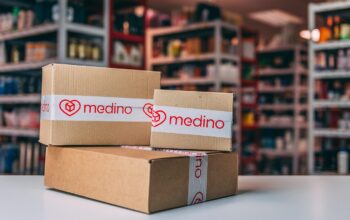Healthcare supply chains are undergoing a major transformation in 2025, intertwining cutting-edge technology with patient-centric thinking to ensure medicine and devices reach those who need them most—efficiently and safely. Let’s take a stroll through five real-world innovations that are redefining health supply chains, each addressing unique challenges with clear benefits for providers and patients alike.
1. Smart Cold Chain Logistics for Temperature-Sensitive Biologics Imagine vaccines or biologics as delicate travelers who need the perfect climate-controlled limousine to arrive unharmed. Advanced cold chain logistics now utilize smart packaging embedded with sensors that monitor temperature in real time throughout the journey. These sensors alert handlers instantly if conditions risk compromising the precious cargo. Behind the scenes, AI optimizes routes to shorten delivery times and avoid delays.
This isn’t just theory—healthcare logistics firms are rapidly adopting these technologies, ensuring lifesaving therapies reach remote clinics intact. The surge in home healthcare means medications must stay stable right up to the patient’s doorstep, making cold chain solutions vital.
2. Agentic AI-Driven Autonomous Operations Think of agentic AI as a smart assistant that doesn’t just recommend but actively takes charge of supply chain decisions, from demand forecasting to supplier selection and route planning. Unlike traditional automated systems that require constant human input, agentic AI autonomously adapts to changing circumstances, improving responsiveness and efficiency.
Companies leading the healthcare supply chain have reported drastic reductions in bottlenecks and improved safety by deploying autonomous warehouses and vehicles. The technology frees up workers from repetitive tasks, letting them focus on high-impact decisions. It’s like moving from a static GPS to a self-driving car that navigates unexpected roadblocks.
3. Blockchain for Transparent Medical Supply Traceability In an industry where trust and safety are non-negotiable, blockchain acts like an incorruptible ledger that records every transaction and movement of medical products. This transparency prevents counterfeit medicines from entering circulation and helps quickly trace any issues back to their source.
Healthcare providers and regulators appreciate how blockchain integration cuts through complexity, ensuring every item is authentic and properly handled. Patients and doctors get peace of mind knowing their treatments are genuine and well managed.
4. Connected Medical Devices and At-Home Healthcare From smart wearables to edge computing-enabled devices, health monitoring is stepping out of hospitals and into patients’ homes. This trend answers the call of aging baby boomers who prefer to age comfortably at home while retaining access to quality care.
Healthcare companies are now integrating connected devices that continuously feed real-time vital signs and alerts to clinicians, enabling quick interventions without an office visit. This shift reduces hospital overcrowding and brings personalized health management to a whole new level.
5. Sustainable and Green Logistics Practices With rising awareness of environmental impact, health supply chains are investing in eco-friendly transportation such as electric fleets and energy-efficient warehouses. Think of it as giving the supply chain a green makeover to minimize its carbon footprint without sacrificing speed or reliability.
Some firms now employ smart packaging designed to reduce waste and energy consumption. Sustainable initiatives also promote resilience, making supply chains less vulnerable to disruptions and more adaptable to evolving healthcare needs.
Why These Innovations Matter Each of these trends addresses concrete challenges faced by healthcare logistics: ensuring patient safety with temperature-controlled shipments, combating counterfeit drugs, reducing labor burdens through AI, expanding access to care via home monitoring, and protecting the planet through sustainability.
Experts agree that blending these technologies is key to a responsive, transparent, and patient-first supply chain system. These solutions aren’t just about efficiency; they directly impact treatment outcomes and patient trust.
Looking Ahead As healthcare continues to lean on digital innovation, the supply chain will become a strategic frontline rather than a mere backdrop. Whether it’s through AI’s autonomous decision-making or a simple wearable that alerts a doctor remotely, the future is here, delivering health with speed, safety, and sustainability.
For providers, supply chain managers, or patients, these five trends demonstrate that the right innovations in supply chains can make healthcare not only smarter but genuinely caring.
Embracing this new era invites all stakeholders to rethink logistics as a vital ingredient in health success stories, where technology and humanity combine seamlessly to save lives every day.
References:
- https://www.globenewswire.com/news-release/2025/06/16/3099985/0/en/Healthcare-Logistics-Market-2025-2034-Demand-for-Temperature-sensitive-Biologics-E-commerce-Growth-and-Enhanced-Supply-Chain-Resilience-Driving-Growth.html
- https://www.hklaw.com/en/insights/publications/2025/06/us-pharmaceutical-manufacturing-and-supply-chain-2025-risks
- https://www.gartner.com/en/supply-chain/research/supply-chain-top-25
- https://wewillcure.com/insights/healthcare-innovation-report
- https://starfishmedical.com/resource/interesting-2025-medtech-trends/
- https://www.gartner.com/en/newsroom/2025-06-18-gartner-announces-2025-rankings-of-the-global-supply-chain-top-25
- https://www.twc.texas.gov/sites/default/files/wf/docs/statewide-eligible-training-program-list-twc.xlsx
- https://www.criadv.com/insight/preparing-for-the-next-era-of-healthcare/



